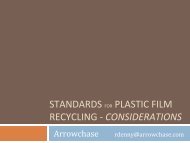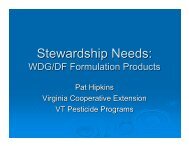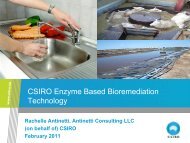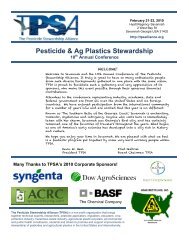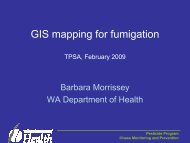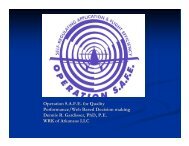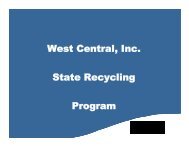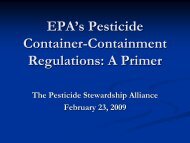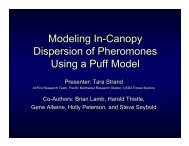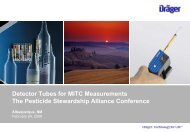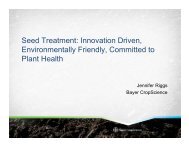Clean Sweep Programs - US Environmental Protection Agency
Clean Sweep Programs - US Environmental Protection Agency
Clean Sweep Programs - US Environmental Protection Agency
- No tags were found...
You also want an ePaper? Increase the reach of your titles
YUMPU automatically turns print PDFs into web optimized ePapers that Google loves.
Summary of Colorado Waste Pesticide Disposal ProgramIn 1994, Colorado State University Cooperative Extension (CSUCE) sponsored a pilot project forthe collection and disposal of unwanted pesticides. Funding for the project was provided by an EPA grantfor $75,000 (Section 319 of the <strong>Clean</strong> Water Act) and a $50,000 in-kind match. Brochures and registrationforms were distributed to11,000 potential participants with a return of 67 registering for the event.Initially, there was some question of liability under CERCLA. CSUCE was acting as a broker for thehazardous waste and could be legally liable for any accidents associated with the collection and disposalevent. It was agreed to permit CSUCE to assume the role.In 1995, a competitive bid was conducted to hire a contractor. The competitive bid contained arequirement for the contractor to pick up the pesticides from the participants’ sites and to accept hazardouswaste generator status to limit the liability of CSUCE. ENSCO won the contract and visited each site topick up the designated pesticides that had been identified and tagged. Colorado used the contractor-pickup-methodrather than having participants transport the pesticides to a central site. This minimized the effortneeded by the participant and the probability of accidents on the way to the site.ENSCO transferred most of the pesticides to a holding facility in El Dorado, Arkansas. Dioxincontainingmaterials were transported directly to the incinerator in Coffeyville, Kansas. From El Dorado,selected products were transferred to Oklahoma for landfilling. Some mercury products were transferred toCanada for stabilization and landfilling. A total of 17,000 pounds of pesticides were collected from 67 sites.In 1997, the Department of Agriculture encouraged participation in an agricultural pesticide disposalprogram where the contractor serviced the entire state and was responsible for all aspects of the programincluding advertising, registration and appointments, collection, and disposal. This program required thecontractor to pick up waste at the participant’s site and did not allow the participant to transport the waste.This format is based on the State’s interpretation of EPA regulations. The collection programs conducted in1996 through 1999 all operated like this. All collection programs, 1996 through 1999, were paid for by theparticipants. It is anticipated that future collection programs will be operated by private contractors and thetotal cost will be paid for by the participants. Currently, the average cost is $2.25 to $2.65 per pound, anddepends on the total amounts of pesticides collected during the program.



